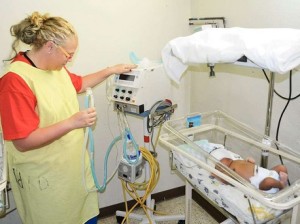16
October
Today was ward rounds at Annotto Bay, which was an excellent learning experience. Typically the morning on the ward is a combination of “ward reviews” which is a brief follow up visit for (mostly) recently discharged patients who need a sooner follow up than the next available clinic date. I was able to see a baby that I had admitted for dehydration and failure to regain birthweight on my very first day of work. He was discharged a few days ago and is doing great now, has surpassed birthweight and is feeding well – I’m so happy about that!
The remainder of the morning is spent discussing patients currently admitted to the ward. I never realized how much I enjoyed the whole process of reviewing management and differential diagnoses and now I realize how much more important this process becomes in a setting such as this where management decisions are largely based on your clinical judgment and a limited number of available tests. There are quite a few patients currently admitted, most of them neonates, and quite a few admitted for jaundice. The management of neonatal jaundice here is an interesting mix of some quite familiar therapies mixed in with some (such as giving phenobarbital and albumin) that I had never heard of, but when explained, made intuitive sense. There is no universal bilirubin screening for newborns here and so only babies with clinical concern for jaundice end up getting a level. Even with mild jaundice, mothers are sometimes encouraged to expose the babies to sunlight and advised to return to care if jaundice does not improve. Here in Annotto Bay there is the capability for phototherapy as well as exchange transfusion if the need arises.
Overall a great day, and definitely the most “academic” day so far, which is a nice contrast to the constant buzz of the clinic setting.
RH








Connect With Us